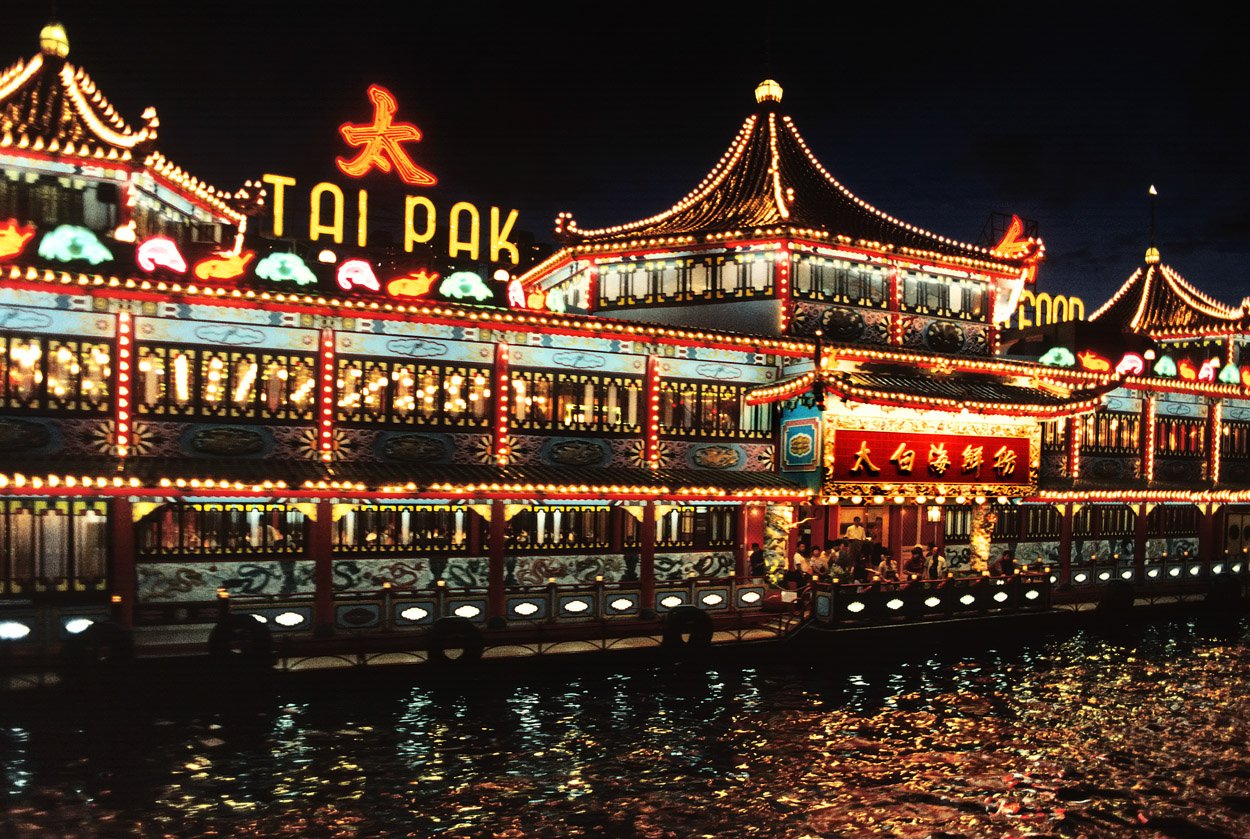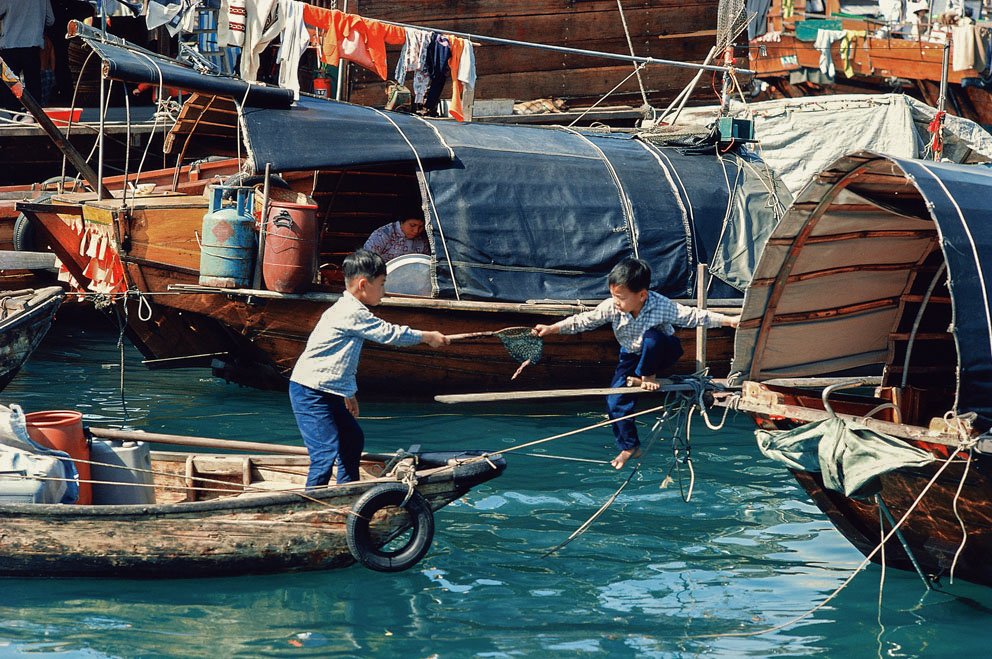The name Hong Kong itself and its literal translation, 'fragrant harbour', most likely originated from a little village we now know as Aberdeen. In the 16th century, Hong Kong Tsuen was a trading port known for its divine-smelling incense trees, hence its name ‘fragrant harbour’.
Aberdeen grew to be an important heaven for the floating fishing communities like the Tanka, counting over 28,000 people or about 4000 families at its height in the 60's.
The Tanka operated the first floating restaurants of which they were many in the 50's and 60's. The world’s largest Jumbo Floating Restaurant opened its doors in 1976. Regretfully, due to corona, the Jumbo had to close its doors in 2020 and might be towed out of the harbour as soon as next month.
If you are in Hong Kong, you may want to bid this legendary monument farewell while exploring other cool parts of Aberdeen. For tips you can refer to this article written by Chistopher DeWolf on ZolimaCityMag or learn more on ‘Discover Hong Kong’ by the Hong Kong Tourism Board.
In the meantime, feel free to enjoy our special collection of Aberdeen memories by various photographers represented by Blue Lotus Gallery, spanning from the late 20th century until today.
Fan Ho, Hong Kong Boat Scene #10, Aberdeen, Hong Kong 1963
The concept of the floating restaurant can be traced back to early 20th century. Initially they were run by the boat-dwelling Tanka people serving food to affluent customers. During the heyday of floating restaurants in the 1950s, there were more than 10 vessels moored in Aberdeen Harbour. The most famous one was named Tai Pak, established in 1952 as seen here in a photo made by Fan Ho in 1963.
Keith Macgregor, Two floating Restaurants, Aberdeen, Hong Kong 1972, [KM-587]
Keith Macgregor, Jumbo from Ferry, Aberdeen, Hong Kong 2005, [KM-587B]
Keith Macgregor, Arrival of the Jumbo Boat, Aberdeen in 1976, [KM-177B]
Keith Macgregor, Tai Pak Restaurant at Night, Aberdeen [KM-587]
In October 1976, Stanley Ho founded the Jumbo Floating Restaurant, spending millions over the construction of the landmark with style inspired by Imperial Chinese art murals, dragon statues and pagoda structures throughout the venue.
The Jumbo Floating restaurant shot in 2020, as shot by Matthew Ng, days before the lights switched off for the last time.
Aberdeen harbour has been home of the Tanka or boat people for centuries.
The Tanka's or boat people are an ethnic group in Southern China. "Tank" is a Cantonese term for boat or junk and "ka" means family or peoples.
Though many now live onshore, some from the older generations still live on their boats and pursue their traditional livelihood of fishing. Historically, the Tankas were considered to be outcasts. Since they were boat people who lived by the sea, they were sometimes referred to as "sea gypsies" by both Chinese and British.
Their origins are academically debated but the most widely held theory is that they are descendants from the Yue inhabitants in South China before the Han Chinese moved in. They had their own distinctive language very different to Han Chinese. They gradually assimilated into Han culture. However, Tanka have preserved many of their native traditions that are not found in Han Chinese culture.
Keith Macgregor, Aberdeen Fishing Fleet, Hong Kong 1986, [KM-182]
Keith Macgregor, Aberdeen, Hong Kong 1974 [KM-176A]
Keith Macgregor, Aberdeen Sampans, Hong Kong 1975 [KM-27]
Keith Macgregor, Sampan Girls and Curlers, Aberdeen Hong Kong 1976 [KM-961]
Keith Macgregor, Two little boys on Sampans, Aberdeen, Hong Kong 1982, [KM-189]
Keith Macgregor, Man with dried oysters, Aberdeen, Hong Kong 1974, [KM-189C]
Keith Macgregor, Boys Playing on Fishing boat, Aberdeen, Hong Kong 1980 [KM-189A]
© Romain Jacquet-Lagrèze, Aberdeen at Dusk, Hong Kong 2015

















